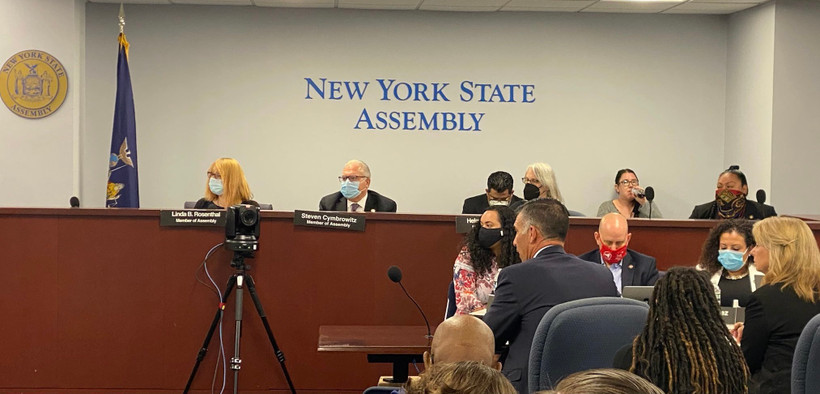Why Isn’t New York Offering Paper Applications for COVID Rent Relief?
The $115 million state contract for administering the program required a paper application. Without it, tenants who can’t access technology may be getting left behind.

The $115 million state contract for administering the program required a paper application. Without it, tenants who can’t access technology may be getting left behind.

At New York Focus, our central mission is to help readers better understand how New York really works. If you think this article succeeded, please consider supporting our mission and making more stories like this one possible.
New York is an incongruous state. We’re home to fabulous wealth — if the state were a country, it would have the tenth largest economy in the world — but also the highest rate of wealth inequality. We’re among the most diverse – but also the most segregated. We passed the nation’s most ambitious climate law — but haven’t been meeting its deadlines and continue to subsidize industries hastening the climate crisis.
As New York’s only statewide nonprofit news publication, our journalism exists to help you make sense of these contradictions. Our work scrutinizes how power works in the state, unpacks who’s really calling the shots, and reveals how obscure decisions shape ordinary New Yorkers’ lives.
In the last two decades, the number of local news outlets in New York have been nearly slashed in half, allowing elected officials and powerful individuals to increasingly operate in the dark — with the average New Yorker none the wiser.
We’re on a mission to change that. Our work has already shown what can happen when those with power know that someone is watching, with stories that have prompted policy changes and spurred legislation. We have ambitious plans for the rest of the year and beyond, including tackling new beats and more hard-hitting stories — but we need your help to make them a reality.
If you’re able, please consider supporting our journalism with a one-time gift or a monthly gift. We can't do this work without you.
Thank you,


Environmentalists have long charged that New York is falling short of its climate mandates. Now, they’re taking the state to court.
Mental health providers are scrambling to prevent mass layoffs and program closures, leaving advocates urging state leaders to step in before it’s too late.
Governor Hochul’s budget allocates only a fraction of what the state Board of Regents suggested for three state-owned Indigenous schools.
Longstanding perks like premium-free insurance could be at risk due to a city budget crunch.
They want to beef up the powerful but little-known State Commission of Correction.
Roughly 60,000 children will lose vouchers over the next year without more funding.
The state is pushing ahead on all-electric buildings, but a draft update to the building code leaves out other key recommendations from the state’s climate plan.
The state has yet to publish a building code update, promised in December, which should include requirements to phase out fossil fuel appliances in new homes.
The Bronx Community Foundation spent almost none of the funds it raised for victims of the 2022 Twin Parks apartment fire.